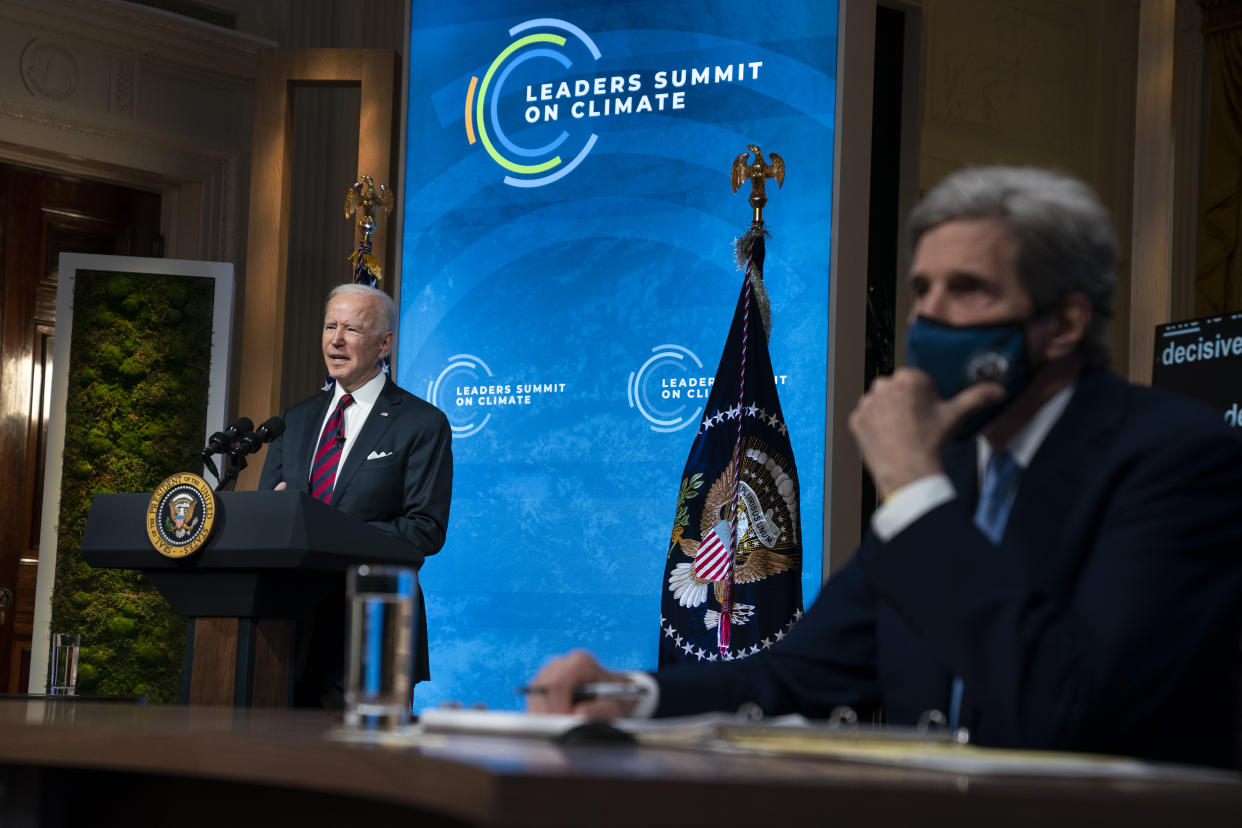4 things that could sink Biden’s climate plan
President Biden’s climate plan is ambitious, but achievable, many experts believe. On April 22, Earth Day, Biden announced a national goal of cutting greenhouse gas emissions by up to 52% by 2030, compared with 2005 levels. That’s nearly twice the reduction President Obama aimed for, and the most aggressive American effort yet to address global warming.
Biden has also set goals of eliminating greenhouse gas emissions in the power sector by 2035 and in the overall economy by 2050. Princeton University’s Andlinger Center for Energy and the Environment recently published a detailed report describing five different scenarios for reaching these goals, an outlook the Biden administration echoes. “We see many pathways to the goal,” a White House official told reporters in an April 21 briefing.
There’s also a lot that could go wrong. Here are 4 things that could prevent the nation from reaching Biden’s climate goals:
Politics. The most obvious threat to Biden’s climate agenda is a shift in power in the 2022 midterm elections and the 2024 presidential election. When Donald Trump became president in 2017, he largely reversed President Obama’s climate goals, by rolling back new rules on power plant pollution, vehicle fuel economy and other things. Some green energy development continued, such as the rollout of electric vehicles and the retirement of dirty coal-fired power plants that had become more expensive than cleaner plants powered by solar, wind and natural gas. But federal involvement is crucial for providing incentives the private sector can’t, such as tax breaks for clean-power generation, coordination of regional planning and funding for new technology where breakthroughs are needed.

Republicans have a decent chance at taking control of at least one house of Congress in 2022, and Trump’s narrow loss to Biden last year suggests a Trumpy Republican might have a shot at the White House in 2024. But would Republicans roll back Biden’s plan if they could? Trump himself was uniquely regressive, with a 20th-century affinity for coal plants and smokestack industries. Corporate America increasingly supports efforts to combat climate change, and the public does too. Even oil companies such as Exxon Mobil are developing new business units to remove carbon from the air and cash in on the shift to green energy. There’s no Republican climate plan, so it’s not clear what a GOP president might change. But Biden himself surely realizes that the faster the shift to green energy happens, the more difficult it will be for future leaders to reverse it.
Regionalism. Eliminating greenhouse gas emissions from the power sector will require lots of new wind and solar facilities, which seems doable. But it will also require a massive revamp of the national power grid, including new high-voltage lines able to move power cross-country, so cheap solar power from the southwest can be used in the east and cheap wind power from the Great Plains can be used in the west. That’s a lot harder.

“Right now, there’s so little interregional planning, almost nothing is occurring,” says John Moore of the National Resources Defense council. “None of those lines are being built because they cross two or three different grid regions. Sometimes the biggest opponents are power companies that want to build their own lines.” If Congress provided funding for interstate high-voltage lines, that could resolve some disputes. Federal coordination could help unsnarl permitting and right-of-way issues. The Biden plan hasn’t spelled out how it plans to address regional barriers, but Biden officials say a detailed roadmap is coming within a few months.
Big Oil. The powerful oil and gas industry has lost momentum, with profits down, Congress threatening to kill valuable tax breaks and investors shifting to green-energy darlings. But industry giants such as Exxon Mobil and Chevron have important allies in Congress and many state capitals and they employ roughly 1.5 million Americans in relatively high-paying jobs. If Biden’s shift to green energy causes high-profile job losses in oil and gas, it could turn public opinion against the shift. Biden and his climate team seem to recognize the risk. Biden’s National Climate Adviser, Gina McCarthy, says any workers displaced form oil and gas must be able to find work for comparable pay without moving “halfway across the country.” But this will be a messaging battle, with the Biden team trying to prove how green energy helps ordinary families while the opposition champions its own economic benefits.

[Read more: How Tony Stark inspired Robert Downey Jr. to take action on climate change]
Getting the technology wrong. Innovation can produce surprises, one reason private investors are sometimes reluctant to bet big on apparent breakthroughs. And a wrong bet could set back Biden’s climate efforts. One example is electric vehicles, which the Biden plan highlights as a key way to curtail emissions from transportation. But the production of electric vehicles and especially the batteries that power them generates a lot of pollution, and some technologists think cleaner hydrogen-powered cars will ultimately supplant EVs. Biden wants the government to help finance 500,000 EV charging stations—five times the existing number—and Citigroup estimates the total need might be 1.5 million. But what would happen to those stations if breakthroughs in hydrogen rendered them stranded assets? And would the government compensate private firms if they invested in gateway technologies that turned out not to be the wave of the future after all?
When Biden officials talk about “many pathways,” they’re leaving room for trial and error and the ability to reboot if one approach fails. It’s a shrewd strategy, but there will be challenges when something goes wrong, and managing the failures will probably be as important as touting the successes.
Rick Newman is the author of four books, including "Rebounders: How Winners Pivot from Setback to Success.” Follow him on Twitter: @rickjnewman. You can also send confidential tips, and click here to get Rick’s stories by email.
Read more:
Get the latest financial and business news from Yahoo Finance
